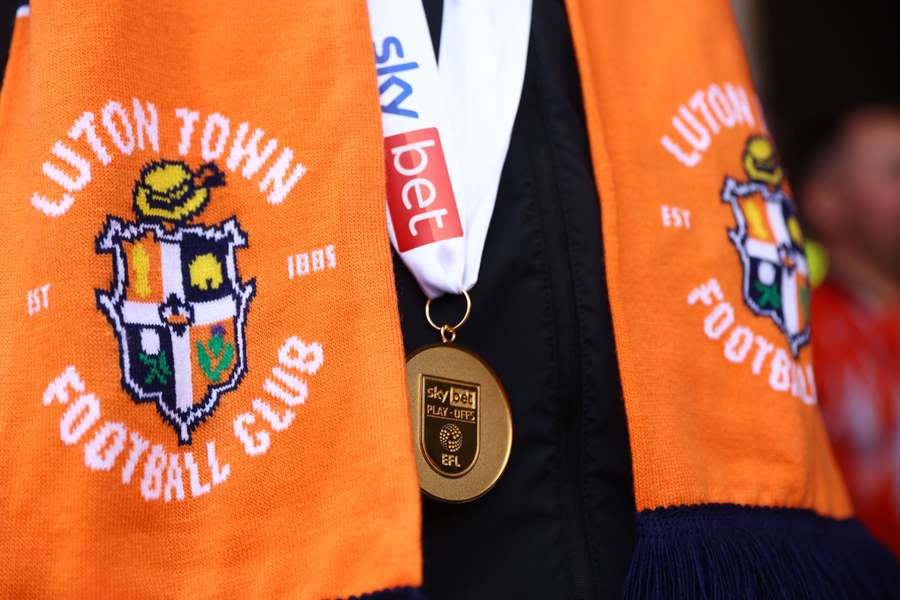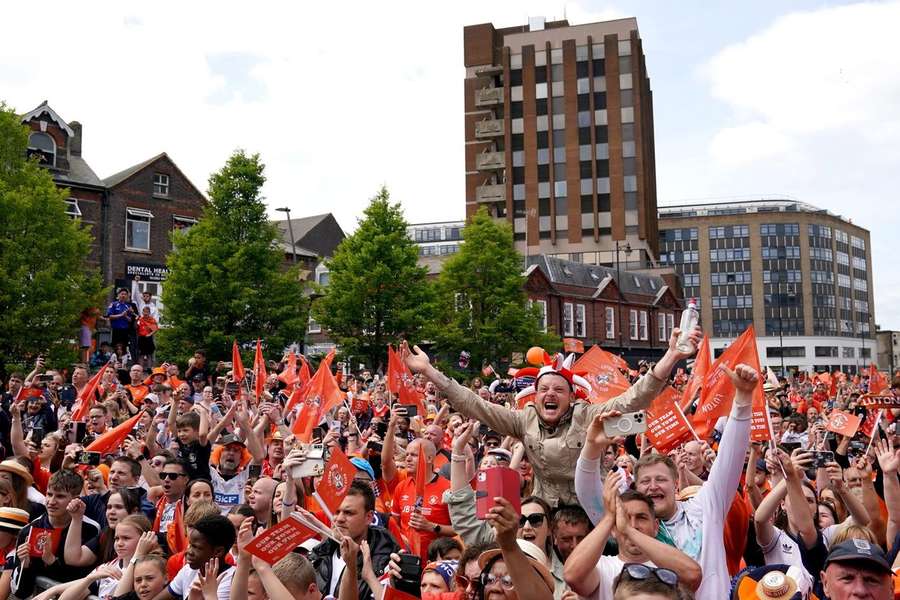Luton's remarkable rise to the top is an example to the likes of Wrexham

Wrexham co-owner Ryan Reynolds has certainly taken note, the Hollywood A-lister quick to congratulate The Hatters on social media for their May 27th promotion and adding a watching eyes emoji.
His side, followed by a global audience drawn by their Hollywood owners and the multiple Emmy-nominated docu-series 'Welcome to Wrexham', were promoted back to league football last season.
Luton chairman David Wilkinson told Reuters comparisons only went so far.
"Most of us think that people have got rather too carried away with Wrexham and not enough with us, because we've come further and it's been a very exciting ride," he laughed. "There's a big difference between them and us.
"First of all what makes us really different from certainly any teams in the top two divisions is that we (the owners) are all local people and all Luton fans, and the higher you go you notice that.
"The (other) clubs are now owned by Americans or Arabs or whatever and it does make us feel different, and of course we're a lot smaller than most of them too."
Kenilworth Road, Luton's home since 1905 with its Oak Road End reached by a staircase over the back gardens of terraced homes, will be about the same capacity as AFC Bournemouth (11,307) once seats are added in the rebuilt Bobbers Stand.
They have no external debt and are not about to run wild in the transfer market.
One of their players, former West Ham United loanee midfielder Pelly Ruddock Mpanzu, is the first to go all the way from the fifth tier to the top with the same club.
"What promotion to the Premier League really does is make us sustainable, because it will enable us to finish and build our new stadium which will put us in a different ballpark," said Wilkinson.
"At the same time, it will make a better squad for us even if we get relegated to be able to perform at a higher level in the Championship. We don't think we will be, but it's sustaining the club for the future which is what it's always been about."
Luton hope to start work on a new 23,000-seat stadium in 2024 and move in two years later.
Unable to match the financial firepower of bigger clubs even in the Championship, they invested in scouting, coaching and analytics.
"We've recruited quite well, we've had two recent managers who because of their talents have persuaded young players that they can make them better and at the same time climb up the leagues," said Wilkinson.
Luton were last in the top flight from 1982-1992, pre-Premier League when the airport town north of London still had a Vauxhall car factory, and beat Arsenal 3-2 in the 1988 League Cup final.

In the National League for five years to 2014, after a 30-point deduction for financial irregularities, they reached the Premier League by beating Coventry City 6-5 on penalties in the playoffs.
"We're natural underdogs," said Wilkinson. "Our belief is we'll give a few people a bit of a shock this year and we'll see how we go.
"Kenilworth Road, with the changes we've had to make for the media, is going to be more intimidating than it was before because we've now got four sides to the stadium rather than three sides and beach huts.
"Clubs will not like coming to Kenilworth Road this season at all."

